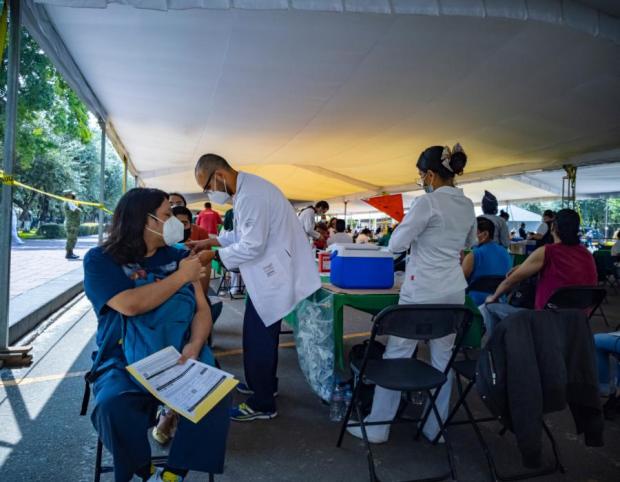Public administrators face unprecedented challenges but also a wealth of opportunity. While many feel concerned about issues with funding, public perception, and regulatory compliance, the reality is that emerging research and technological tools promise to help public administrators tackle these issues head-on.
As public programs' influence evolves, public administrators can identify strategies that have a measurable impact on struggling communities now and in the future. These strategies call for an expansion in public administrators' focus, shifting from immediate problem-solving to resilience, with the hopes of helping communities weather tomorrow's challenges.
The Role of a Public Administrator in Community Resilience
As uniquely passionate professionals, public administrators feel driven to make a difference in their communities. While this can be accomplished, to some extent, with short-term programs and support, the ultimate goal of the public administrator should involve developing community resilience. Investing in resilient communities allows them to thrive far into the future and could have a positive influence on policies and programs down the road.
Defining Community Resilience in the Public Sector
Community resilience is a complex concept that determines how and whether communities can 'bounce back' from adversity. Many difficult situations can test communities, ranging from health crises to natural disasters. Communities are considered 'resilient' when they can adapt to crises, maintain health and safety, and take collective action to support individuals and families.
Examples of Successful Resilience Building by Public Administrators
Public administrators facilitate resilience by helping communities address ongoing disparities or other challenges that limit residents' health, well-being, and economic vitality. Success stories abound:
- Hurricane Katrina recovery. Following Hurricane Katrina, public administrators implemented long-term solutions to enhance residents' ability to navigate future natural disasters. Infrastructure rebuilding emphasized stronger levees, while the broad-based Unified New Orleans Plan (UNOP) sought citizen input. The city also established the Office of Resilience & Sustainability (ORS) to improve climate resilience through more robust environmental stewardship.
- Healthy Seattle. Spurred by the pandemic and its disproportionate impact on low-income communities, the Healthy Seattle initiative pilot program was launched in 2022. The goal is to boost care for uninsured residents, especially those residing in historically marginalized communities. Nearby, Snohomish County established an Office of Recovery & Resilience to guide pandemic recovery efforts while also seeking "extensive community engagement."
Strategies for Enhancing Community Resilience in Urban and Rural Areas
Efforts to build community resilience vary dramatically from one region to the next. In rural areas, there is often a stronger emphasis on infrastructure and formal support networks, with the recognition that residents can quickly become isolated and at risk. Ideally, community resilience programs will reduce the time needed to deliver emergency services.
Urban strategies must account for overcrowding, as this can expedite the spread of disease. Meanwhile, complex infrastructures call for exceptional coordination. These may be more robust than rural infrastructure, but they can also be challenging to maintain or upgrade. Diverse populations can bring complexity to urban resilience-building, with public administrators increasingly striving for equitability in social services.
Implementing Infrastructure Improvements

Infrastructure determines how communities respond to crises and the extent to which swift recoveries are possible. Robust transportation infrastructure is crucial for supporting evacuation efforts and maintaining access to critical resources and services. Efficient and accessible transportation expedites the flow of goods to help economies remain stable even in the midst of significant challenges.
Developing Policies for Sustainable Community Growth
Research and analysis play heavily into public administrators' efforts to promote policies that, in turn, will pave a path toward sustainable community growth. Public administrators are in tune with what communities need, but they should bolster this deep-seated knowledge with data. Public administrators need to gather data and reveal what it says about existing policies.
Research can inform powerful policy drafts that promote long-term community growth initiatives.
Collaborative Efforts Between Government and Non-Governmental Organizations (NGOs)
Public administrators can only accomplish so much on their own. To expand their reach, they must form connections between government agencies and non-governmental organizations. Working together, these organizations can leverage a broader range of resources and expertise to make impressive progress toward achieving mutual goals.
Examples of Effective Partnerships
Through the years, many powerful partnerships have driven impressive improvements in community resilience. Doctors Without Borders exemplifies the powerful impact NGOs can achieve through collaboration with public administrators.
The Doctors Without Borders website reveals that the NGO has worked with "local authorities and community-based organizations on a wide range of projects.” These include everything from housing initiatives in New York to helping healthcare networks and local departments of health implement "public health programs for farm workers in Immokalee, Florida."
Additional collaborative efforts involve local, state, and federal agencies working alongside familiar NGOs such as Save the Children. This partnership emphasizes localization as a key strategy for helping communities "strengthen their role and voice to drive sustainable impact."
Leveraging Resources and Expertise for Community Benefit
In addition to working closely with NGOs, public administrators can leverage many other resources to benefit their communities. Often, this involves working closely with colleges and universities to drive research initiatives. Collaborative efforts may also involve corporate entities, which can provide much-needed funding to tackle ambitious projects.
For example, Salesforce has made active efforts to promote community resilience in San Francisco, especially from a transportation and infrastructure perspective. Working closely with the Transbay Joint Powers Authority (TJPA) and the San Francisco Municipal Transportation Agency (SFMTA), this influential software company has helped create a regional transit hub known as the Salesforce Transit Center.
Planning and Engagement Tips to Empower Resilient Communities
It takes extensive planning and a wealth of insight to drive programs that make communities more resilient. Public administrators play a key role in gathering feedback, promoting policies, and coordinating programs that meet the evolving needs of communities.
Tools and Techniques for Community Engagement
Community members have an influential role to play in boosting resilience, but they must feel included in these efforts. An engaged community can make a world of difference, and public administrators can help foster community engagement by leveraging mobile apps or social media to drive digital engagement.
Public forums encourage community members to make their voices known. At the same time, workshops or even festivals help establish a more cohesive and trusting community that will be receptive to future resilience-building efforts.
Building Capacity and Leadership at the Local Level
Local leaders play a vital role in advocating for impactful policies and ensuring that communities have the funding necessary to make key improvements. For instance, training and mentorship programs can encourage residents to play a more active role in supporting their communities and striving for change.
Youth councils or advisory boards can empower the leaders of tomorrow. Generally, public administrators should strive for maximum community engagement as a means of fueling the passion needed to pursue leadership opportunities.
Addressing Equity and Inclusion in Resilience Efforts
All efforts to improve community resilience should emphasize equity and inclusion, as this can have a dramatic impact on resilience-building outcomes. Unfortunately, access to resources has long proven uneven. Public administrators must support efforts to identify and address systemic barriers so that their initiatives can have the most significant possible impact on vulnerable communities.
Identifying and Supporting Vulnerable Populations
Different populations may be vulnerable to other challenges, but the social determinants of health (SDOH) have an outsized impact. Assessing these determinants can help public administrators and their partners reveal which populations are most vulnerable and which are most in need of resilience-boosting programs or initiatives.
Geographic information systems (GIS) can play a valuable role in identifying vulnerable populations, as can risk assessments and consultations with stakeholders. Historical data can also prove insightful, revealing where past efforts have fallen short due to local vulnerabilities.
Ensuring Equitable Access to Resources and Recovery Efforts
When designing policies to boost resilience, public administrators must be mindful of disparities and how these might prevent certain populations from taking full advantage of public resources. Planning processes must be fully inclusive and should seek a variety of perspectives to reveal areas that have not been adequately addressed. Continuous evaluations can reveal ongoing inequities and ensure that they are promptly resolved.
Innovation and Technology in Building Resilient Communities
While today's communities and public administrators face a myriad of challenges, they do possess one distinct advantage: access to cutting-edge tools and technologies. These can help public administrators do more with less by driving data-driven solutions and even fostering greater community engagement.
Advancements in Data Analysis for Risk Assessment
While traditional risk assessment strategies remain valuable, advanced data analytics solutions improve this effort by leveraging machine learning to help public administrators glean actionable insights from vast quantities of data. Analyzing this data with real-time monitoring can help public administrators reveal emerging environmental, health, or social concerns, along with potential solutions.
Technological Solutions for Emergency Response and Recovery
With emergency response, every added minute can make a huge difference. Tech-driven solutions facilitate swifter and more effective responses, utilizing everything from drone technology to GIS to drive real-time awareness and mobilize necessary resources. Technological solutions call for comprehensive infrastructure improvements, as these technologies will only reach their full impact if robust infrastructure is available.
Measuring the Impact of Resilience Strategies
Resilience strategies must be continually examined and adjusted to account for changing conditions and situations. This begins with gathering a wealth of data from numerous sources, as highlighted below:
Indicators and Metrics for Assessing Community Resilience

One of the chief challenges of building resilience is that it can be difficult to quantify. Assessment efforts must establish easy-to-understand metrics that reveal current levels of resilience and where room for improvement exists. Examples include:
- Air and water quality. Environmental indicators play heavily into community resilience and are also among the most straightforward metrics available. Communities with low pollution levels will be more resilient to health crises and other future challenges.
- Vaccination rates. Along with rates of chronic disease and access to healthcare, vaccination rates can reveal public readiness and the ability to withstand epidemics or other emergencies.
- Income levels. Economic resilience is a vital component of overall community resilience. There are many ways to measure this, but income levels, especially compared with the cost of living, provide an immediate indication of how communities are faring from a financial standpoint.
Feedback Mechanisms for Continuous Improvement
Public administrators rely on extensive feedback to help shape their efforts to build community resilience. They must develop consistent and reliable mechanisms for obtaining that feedback, which needs to come from diverse populations and draw on a range of perspectives. Community surveys and focus groups can provide valuable insights, although many communities still rely on the classic town hall meeting.
Preparing for Future Challenges: Adaptation and Learning
Public administrators look to past initiatives to help them determine how they will continue building resilience in the future. While new circumstances will call for adaptations, many insights can be gleaned from previous efforts.
Lessons Learned from Past Disasters
Public administrators can look to past disaster responses for valuable insights. COVID-19 provides many takeaways, revealing where community resilience was lacking and how this impacted the spread of disease.
Above all else, COVID-19 revealed a need for more robust health infrastructure, including better testing and vaccination mechanisms. COVID-19 also told us a lot about the need for equitable access to these programs and resources.
As mentioned previously, numerous insights emerged in response to Hurricane Katrina. In addition, according to Stantec's Global Practice Leader for Coastal Restoration, Steve Mathies, public administrators in New Orleans have learned their lesson. In fact, he believes that New Orleans is a "better place today than it was before Hurricane Katrina. We are a much more resilient city."
Planning for Climate Change and Other Emerging Threats
If the response to Hurricane Katrina is any indication, climate change looms large in our plans for building resilience. Global climate patterns are expected to increase both the frequency and severity of major storms. While we hope to mitigate this by reducing our carbon footprint, there will also be a need for resilient infrastructure and vital social services to help community members recover from inevitable disasters.
Empower Your Community With an MBA in Public Administration
Do you have a strong desire to serve your community and improve resilience? Empower your community by pursuing an MBA in Public Administration and becoming a leader in building resilient communities. The public administration specialization is one of many compelling focus areas available through Champlain College Online. Reach out today to learn more about this exciting opportunity.
FAQs
Public administrators leverage government resources and operations to improve health, well-being, and vitality across entire communities. This role may involve gathering community data and feedback, advocating for or implementing policies, and coordinating services that benefit the community.
The path to becoming a public administrator begins with a targeted education, typically involving a bachelor's degree followed by a relevant graduate-level program. From there, public administrators may take on entry-level roles such as program assistant or policy analyst before eventually moving up the career ladder.
Public administrators can hold many influential positions, working for government agencies, nonprofit organizations, or even corporate entities. Typical jobs include program manager, city manager, policy specialist, or public health administrator.
Working in public administration allows passionate professionals to make a difference in the broader community. This passion-driven field is ideal for those who feel called to public service but can also provide job stability and a strong work-life balance.
At a minimum, public administrators should be trained at the undergraduate level. Many roles now call for master's degrees, with ambitious public administrators often benefiting from seeking a business-based education. Ongoing training is needed to keep these professionals up to date with emerging technologies and new regulations.
Download Program Guide
Learn what you can expect from our online MBA with Public Administration program.

Download Program Guide
I acknowledge that, by clicking the "submit" button, I am giving my express written consent to Champlain College and its representatives to contact me about educational opportunities via email, text, or phone, at the phone number above, including my mobile phone, using an automatic dialer, or pre-recorded message. Message and data rates may apply. I understand that my consent is not a requirement for enrollment, and I may withdraw my consent at any time.






